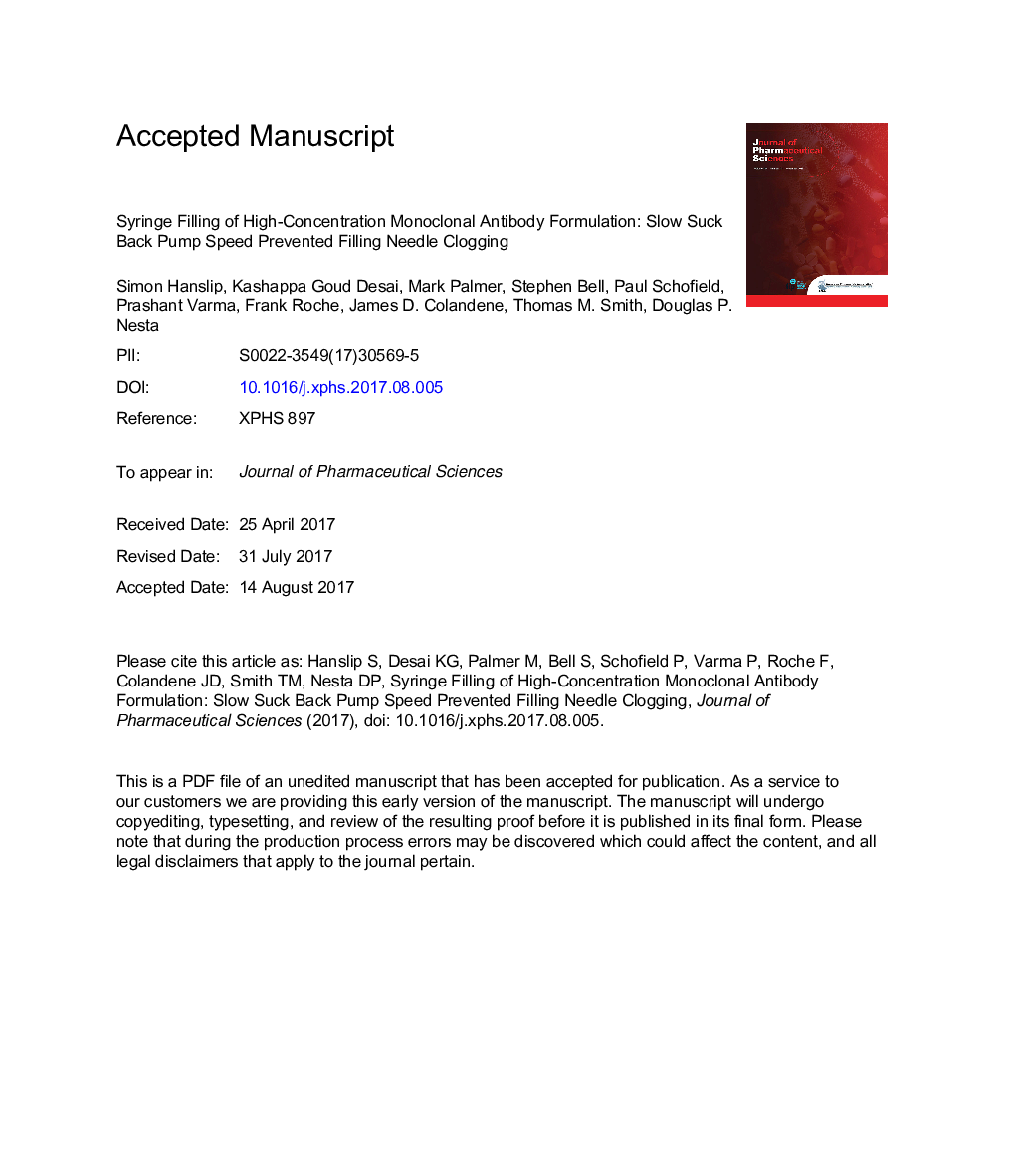| Article ID | Journal | Published Year | Pages | File Type |
|---|---|---|---|---|
| 8513723 | Journal of Pharmaceutical Sciences | 2017 | 7 Pages |
Abstract
Partial and complete clogging of filling needles occurred during syringe filling of a high-concentration mAb formulation. This caused nonvertical liquid flow, which eventually led to the termination of filling. Overcoming this phenomenon was essential to ensure minimal fill weight variation, product waste, and manufacturing downtime. The liquid behavior inside the filling needle was studied using glass and stainless steel needles and demonstrated that effective suck-back control was critical for preventing needle clogging. A key finding of our work is that the suck-back pump speed was a critical factor to achieve an effective suck back. More specifically, a slow suck-back pump speed (<10 rpm; liquid flow rate, <5 mL/min) was essential to improve suck-back control inside the conventional stainless steel filling needles. In contrast, higher suck-back pump speeds (>10 rpm; liquid flow rate, >5 mL/min) resulted in downward product migration within the filling needle leading to formation of a liquid plug at the needle tip, which was prone to rapid drying. Slowing the suck-back pump speed in conjunction with modifying the suck-back volume was effective at consistently withdrawing product into the stainless steel filling needles and prevented needle clogging.
Related Topics
Health Sciences
Pharmacology, Toxicology and Pharmaceutical Science
Drug Discovery
Authors
Simon Hanslip, Kashappa Goud Desai, Mark Palmer, Stephen Bell, Paul Schofield, Prashant Varma, Frank Roche, James D. Colandene, Thomas M. Smith, Douglas P. Nesta,
